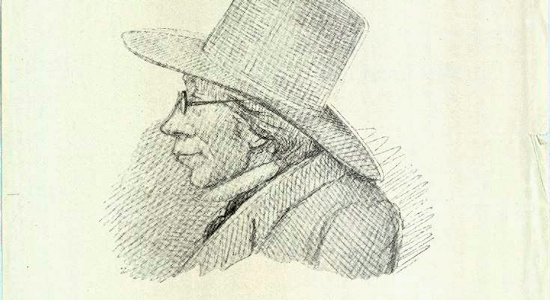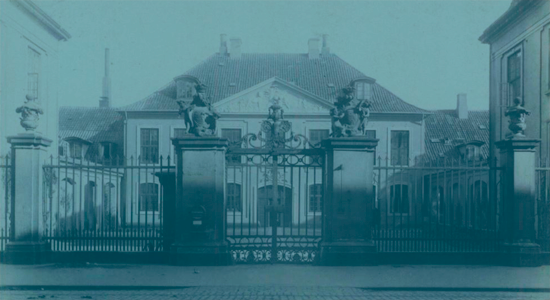Sickness and Death
THE ONE-MAN REVOLUTION

Parody of the Priesthood
After a period of three years of literary silence, Kierkegaard again spoke up on December 20, 1854, and did so in such an alarming voice that Christmas peace was in danger.
The occasion was professor H.L. Martensen’s eulogy to bishop J.P. Mynster, who had been included in a holy series of “witnesses to the truth” that reached back to the time of the apostles.
Kierkegaard protested in the newspaper, The Fatherland, where he called Mynster a “frail pleasure-seeker, who was great only as an orator” and presented his version of a “witness to the truth”:
"A witness to the truth, a real witness to the truth, is a man who is skinned alive, abused, dragged from one prison to the next, and in the end (…) crucified, beheaded, burned at the stake, or fried on a grill, his soulless body left unburied and sprawling (…) in some remote place—that’s how a witness to the truth is buried!" (Var Biskop Mynster et »Sandhedsvidne«, et af »de rette Sandhedsvidner« – er dette Sandhed?. Source: SKS.dk)
Polemic against the Priesthood
With this cannon fire, Kierkegaard commenced his so-called ”attack on the church,” which began with a dozen articles in the newspaper followed by nine issues of his own series of leaflets, The Moment. There he polemicized with abandon and wit against the church and its worldly priesthood. One of his slogans was that genuine Christianity disappeared as it spread across the globe, and he insisted that the authorities of the church admit it. When the admission failed to come, Kierkegaard repeated his protest:
"Not mollified, but in even sharper terms I hereby repeat my objection. I would rather gamble, drink, visit brothels, steal, and murder than participate in making a fool of God. I would rather spend my day at bars and pubs, my nights playing cards or at balls than participate in the kind of seriousness that Martensen calls Christian earnestness." (Stridspunktet med Biskop Martensen; som, christeligt, afgjørende for det i Forveien, christeligt seet, mislige kirkelige Bestaaende. Source: SKS.dk)
The Attack Intensifies
In the course of the next few months, Kierkegaard accused the priests of failing to convert their tear-filled sermons on Sundays into existential praxis on Mondays. They were bourgeois theologians of convenience, who were primarily interested in idyllic parsonages, non-committal feel-good Christianity, and lucrative advancements. He charged the “clerical swindler union” of doing everything it could to preserve its privileges, even if the ”state were to come up with the idea of instituting, e.g., a religion claiming that the moon is made of green cheese.” Or with merciless precision, he writes: “The priest, this epitome of nonsense shrouded in long gowns!”
In the same vein, the church was said to be junk that really ought to be closed down or torn down, baptism amounted to nothing but a splash of water while confirmation was an embarrassing face, and marriage was a sleazy erotic spectacle.
Paul Wasn’t a Serious Man
Church supporters were just as appalled as church detractors were amused. Kierkegaard had again managed to get laughter on his side, which hadn’t been the case since his confrontation with The Corsair, whose pithy form he also frequently used. In the last issue of The Moment, we find examples of a group of texts called “short and sharp.” Among them we find this dialogue:
”Did the Apostle Paul have an official appointment?” No, Paul had no appointment. “Did he make a lot of money some other way?” No, he didn’t make any money. “Was he married, at least?” No, he wasn’t married. ”So Paul wasn’t a serious man!” No, Paul wasn’t a serious man. (Øieblikket Nr. 6. Source: SKS.dk)


